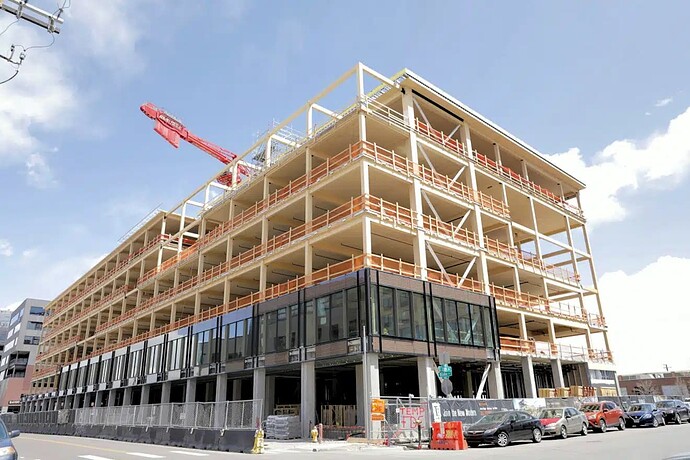The demand for timber buildings is poised to grow exponentially, far beyond the 25-to-40-fold projected in new studies, but it needs to add the right type of value for developers—whether that’s tangible or intangible, driving carbon savings, lighter and faster assembly and construction, or in attracting A-grade tenants with green design.
That is according to Noel Johnson, a US real estate developer who is now using mass timber construction systems on commercial, residential, and mixed-use projects, ranging from the small to $100m-plus high-rises.
Mr Johnson is one of the US’s most prolific mass timber developers, with several projects completed in the residential and commercial sectors. His experience with mass timber has made him one of the industry’s biggest advocates in the US market.
Speaking exclusively to Wood Central, Mr Johnson, who is flying from Portland, Oregan, to present in person at TimberConstruct in August, said the building and construction industry (as well as the timber supply chain) needs to change its mindset around the future of development.
“The real estate development world is a world of billions of dollars of capital flow. And that’s part of the mindset that I would bring to our conversation from scaling up this sort of sensibility standpoint because all we’re looking to do is divert a percentage of that flow globally.”
Mr Johnson said that for mass timber to scale and go beyond being a novelty, it needs to meet the requirements of investment and pension fund money allocators – to appeal to the money markets.
“The core of every fund manager is to acquire differentiated assets – because we all know that will be a better asset,” whether it’s a mega-development – which can take years to fully realise or a smaller development with quick turnarounds.
“Mass timber-based developments have the potential to build a 200-unit development right here; you can build another and turn around for the next one before the mega-development is even out of the ground.”
“It also has a very distinct look and feel – which is very different,” he said, adding that the intangibles, “like guy or gal that wakes up in the morning and likes the space and therefore doesn’t want to move”, help to drive the net income or numerator, that can help drive future developments.
“So it’s not a game of low costs as much as it is, what are your costs relative to the net income, the numerator because all we’re trying to go towards is the resultant, right, the return on that cost.”
“And that’s a good example of how I would speak on a day-to-day level with my projects to my investors to help them understand the value potential and why I’m using mass timber as a tool.”
Early bird registrations close Sunday, July 1, so book quickly!
Mr Johnson will present during the opening panel discussion along with Robert Jackson, a partner at the global engineering firm Fast-Epp, who is at the forefront of mass timber construction, and Liam Wallis, from Hipvhyp, who is building timber projects in Australia.
“So far, we have 39 presenters already lined up,” according to Andrew Dunn, the Timber Construct organiser, who has already lined up nine international speakers for the conference.
“The primary focus is on commercial-ready applications of timber technology,” Mr Dunn said, with the “focus on materials and design, prefabrication, and building techniques.”
